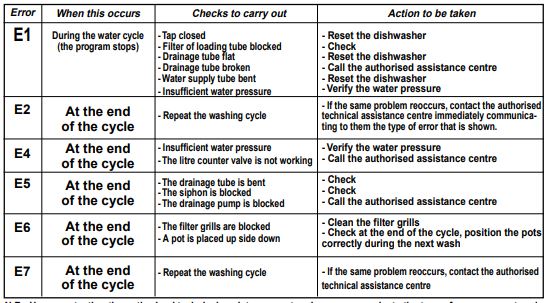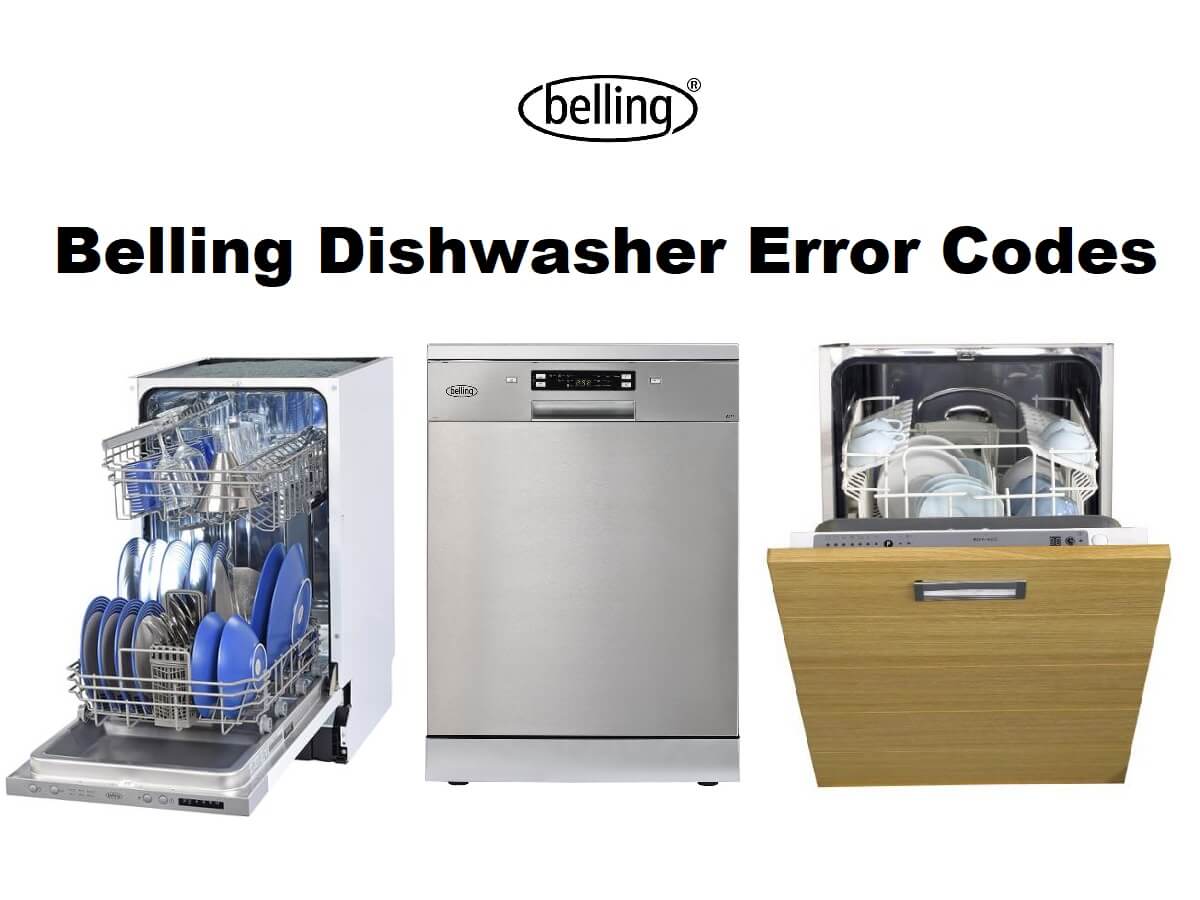The error codes in Belling dishwashers provide crucial information about issues affecting the appliance’s proper functioning. These codes enable users to swiftly diagnose and address potential problems. Each code signifies the presence of a specific malfunction, allowing users to comprehend the nature of the issue before seeking technical support. The error codes serve as a vital guide to optimize the performance of Belling dishwashers and ensure their long-lasting usage.
Codes Table
If malfunctions occur, the appliance will display error codes as below. If overflow occurs, turn off the main water supply before calling a service agent. If there is water in the base pan because of an overfill or small leak, the water should be removed before restarting the dishwasher.
- E1: Door open. The door is opened when the dishwasher is operating.
- E2: Water inlet. Water inlet malfunction.
- E3: Water drainage. Water drainage malfunction.
- E4: Temperature sensor. Temperature sensor malfunction.
- E6: Water leakage occurs.
- E7: Heating element. Abnormal heating.
LED Flash – Meanings and Causes


Troubleshooting
Problem: Dishwasher doesn’t run
Possible Causes:
- Fuse blown, or the circuit breaker acted
- Power supply is not turned on
- Water pressure is low
What To Do:
- Replace fuse or reset circuit breaker. Remove any other appliances sharing the same circuit with the dishwasher
- Make sure the dishwasher is turned on and the door is closed securely. Make sure the power cord is properly plugged into the wall socket
- Check that the water supply is connected properly and the water is turned on
Problem: Noise
Possible Causes:
- Some audible sounds are normal
- Utensils are not secure in the baskets or something small has dropped into the basket
- Motor hums
What To Do:
- Sound from detergent cup opening
- Always ensure everything is secured in the dishwasher
- Dishwasher has not been used regularly. If you do not use it often, remember to set it to fill and pump out every week, this will help keep the seal moist
Problem: Suds in the tub
Possible Causes:
- Improper detergent
- Spilled rinse agent
What To Do:
- Use only the special dishwasher detergent to avoid suds.If this occurs, open the dishwasher and let suds evaporate. Add 1 gallon of cold water to the tub. Close and latch the dishwasher, then start the “soak” wash cycle to drain out the water
- Always wipe up rinse agent spills immediately
Problem: Spots and filming on glasses and flatware
Possible Causes:
- Extremely hard water
- Low inlet temperature
- Overloading the dishwasher
- Improper loading
- Old or damp powder detergent
- Empty rinse agent dispenser
- Incorrect dosage of detergent
What To Do: To remove spots from glassware;
- Take out all metal utensils out of the dishwasher
- Do not add detergent
- Choose the longest cycle
- Start the dishwasher and allow it to run for about 18 to 22 minutes, then it will be in the main wash
- Open the door to pour 2 cups of white vinegar into the bottom of the dishwasher
- Close the door and let the dishwasher complete the cycle. If the vinegar does not work: Repeat as above, except use 1/4 cup (60 ml)of citric acid crystals instead of vinegar.
Problem: Yellow or brown film on inside surfaces
Possible Causes:
- Tea or coffee stains
- Iron deposits in water can cause an overall film
What To Do:
- Using a solution of 1/2 cup of bleach and 3 cups of warm water to remove the stains by hand
- Please call a water softener company for a special filter
Problem: Dishwasher leaks
Possible Causes:
- Overfill dispenser or rinse aid spills
- Dishwasher isn’t level
What To Do:
- Spilled rinse aid could cause oversudding and lead to overflowing. Wipe away any spills with a damp cloth.to overflowing
- Make sure the dishwasher is level

